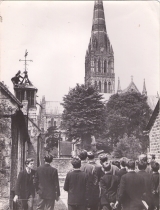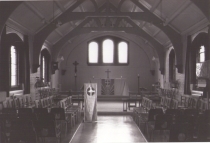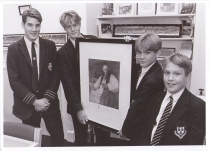




There had been a grammar school in Salisbury from at least the early 16th Century. The earliest Grammar School (which stood in Exeter Street) had, by the 1560’s, become identified as the Chorister’s School and subsequently as the Cathedral School. In 1598 a new Grammar School was opened; it started life in the George Inn (now at the High Street End of the shopping mall), and moved to Castle Street in 1624. The site of this school was opposite Chipper Lane, on the site currently occupied by the Tesco supermarket, as depicted in an 1822 print on show in No 11. The school experienced mixed fortunes and finally closed in or about 1870, due to lack of funding. Though there were a number of other small schools in the city at the time, there was no provision of quality education on any scale.

The foundations of the BWS came in June 1889, when the Bishop of Salisbury, John Wordsworth, announced to his friend Canon Woodall, "I should like to see Salisbury a great educational centre. I should like to fund a school which shall be equal to the greatest and best of our public schools." Accordingly, he set up ‘The Bishop’s School’ in a room in the Bishop’s Palace on 13th January 1890 – it was attended by just 45 boys. The new school was dedicated at a ceremony on 19th April 1890, along with three further new Church Schools – St Mark’s, St Paul’s Road and George Herbert.

Bishop Wordsworth personally donated £3000 (about £35,000 today), which was used to purchase a portion of land in the Cathedral Close and build the original school buildings. After Bishop Wordsworth's death in 1911, the school was renamed to Bishop Wordsworth's School to continue the lasting tradition of quality education that he had started.

In July 1892 the school adopted its first Science Specialism(!) and as a result the Chemistry Lab was equipped that year too. The following year saw the erection of the Carpenter’s Shop and also the establisment of a boarding house for boys. A new building including a Physics Lab and Lecture Room was added in 1897, swiftly followed by a Smith’s Forge and Workshop in 1900. Because of the broader curriculum the school changed its designation from a ‘School of Science’ to become a ‘Secondary School’.
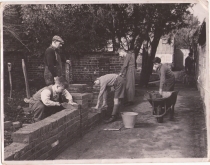
In 1905 the school became a Grammar School, consisting of the current Chapel Block, and Bishopgate. The number attended rose quickly from the initial 45 to about 90 in the Autumn of 1890, to 150 by 1900 and to over 600 by 1922. The increase was partly due to the admission of girls from 1902-1927, and partly due to the increase in the school leaving age over the same period – and to accommodate the coeducational character the additional land for a girls’ playground was acquired in 1903 on a long lease. Around this time the school also gained the use of a large building in the Friary which was adopted as a girls’ boarding house, and the Art School and form room were located in a building on New Street. With the founding of a girls' grammar in 1927, the school reverted to be a boys only establishment. Curiously perhaps, no uniform was compulsory at the school until the arrival of Dr Frederic Happold as Headmaster in 1928. In the early days there was a School cap and tie for the boys and blue gym slip for the girls – with straw boaters worn in the summer.
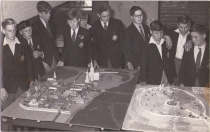
In 1932 a hall, science laboratories and a library were built. By the 1930s, the school had achieved a reputation for pioneering educational work, and in 1936 became a public school (due to the Headmaster’s election to membership of HMC), and in 1948, the Governors adopted Voluntary Controlled Status. Boarding at the school in the Bishopgate buildings ended in the 1950s, and the buildings were used for teaching thereafter. During the Second World War, pupils from the Priory School in Portsmouth moved to BWS to avoid the bombing of the city. The playing fields at Britford Lane are owned by the school, and in 1947 No11 the Close was added to the site on a lease from the Dean & Chapter. After a brief period as a Grant Maintained School in the 1990’s, the school became Voluntary Aided in 2000. HMC membership has been maintained by successive Headmasters from Happold’s time to the present day.

The school now educates over 950 boys aged 11 to 18, with joint classes in the sixth form with South Wilts Grammar School – meaning for the first time in just under a century, girls are to be seen regularly around the site. Buildings – or rather the quality of them – have been a focus of concern for many years, but in 2002, a major re-development of the school's estate began. Since then a new classroom block and drama studio has been swiftly followed by a sports hall and fitness suite, new science labs, new languages facilities, a new art school and new technology block. The most recent additions are a Sixth Form Centre which was completed in Summer 2010 and a cookery room which was completed in Summer 2012. In 2014 the new reception was completed which is now located at the Exeter Street entrance after being located in No11 for over 100 years and in Summer 2017 the new Maths block was completed, replacing the row of portacabins in the back of the school that had been temporarily installed in the 1960’s….
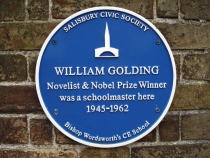
In 2004 the school became a Specialist Language College, and this has led to broadening of the curriculum and further opportunities for overseas trips together with a good deal of outreach work with almost all of the city primary schools. In 2008 the school added a Science Specialism and then in March 2011 Bishop’s became an Academy. Sadly, since the dawning of austerity in 2010 outreach work has been curtailed, but BWS still regularly offers enrichment opportunities for pupils from local primary schools. In this, together with high standards in all of our work we are continuing the traditions of excellence and innovation for which the school has been known throughout its long and rich history.
